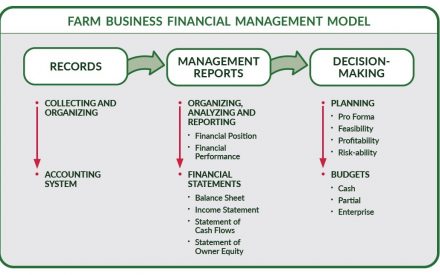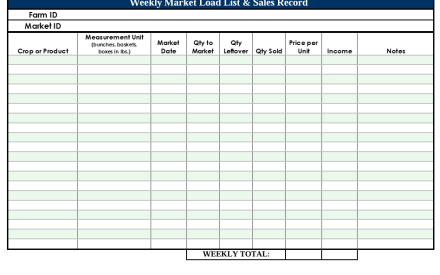Farmers can use multiple tools and methods for analyzing their farm financial statements. Some are very involved and take lots of time, while others don’t take much time at all. Benchmarking is making comparisons to assist the farmer with making the best financial management decisions for their farm business that will improve financial position and performance. Benchmarking allows a farmer to explore strengths and weaknesses and can highlight the production and management practices that are driving enterprise cost of production and profitability.
Benchmarking looks at a three part process for financial analysis.
- Comparison to industry standards
- Comparison to trends
- Comparison to peer groups
Comparison to industry standards
The first part of the process is comparison of a farm’s financial ratios to a set of industry standards. Established by the Farm Financial Standards Council, the Farm Finance Scorecard provides a provides a set of benchmark ratios. The ratio scorecard allows a farmer to look at how their farm business compares to what the industry tells them ought to be a good measure. More information is available in this Extension article – Financial Measurement: Quantification of a farm’s financial position and performance.
Comparison to trends
Internal benchmarking allows a farm to compare their own historic financial measures and ratios over time. A farm will need data from the current month/quarter/year so they can compare to the same month/quarter/year from a different time period. A farmer will be able to seek the progress or lack of over that period. They can use these internal historical trends as an early warning system to make adjustments before their financial position and performance changes.
A farmer should consider these questions when reviewing historical trends.
- What direction is the farm going over the last three years, five years or x number of years?
- If trends show the farm business is improving, why? Is it because of something the farm did? Or is it because of what’s happening in the economy?
- Do we need to do something else in order to continue that improvement?
Comparison to peer groups
External benchmarking to peer farms of the same type provides insight as to how the farm business is doing in comparison to the industry. An external comparison provides an opportunity for the farmer to learn from others.
A farmer might be able to find data from peer farms through a consultant, lender, farm management associations, or a technical college instructor. Benchmarking information can also be retrieved from the FINBIN database at the University of Minnesota’s Center for Farm Financial Management. Using data from peer farms, a farmer can make comparisons to see where they stand against the average, as well as those farms in the low 20%, middle 40% to 60% and high 20% levels of profitability.
Peer comparison decouples the farm’s situation from the current macroeconomic situation in the agriculture industry. For example, dairy farmers had a few challenging years in 2015, 2016, 2017. When a dairy farmer reviews their financials from those three years and compares it to the farm finance scorecard, the ratios and measures may be in the red category. This may not be because the farm did something wrong in managing the farm, but solely because of things that were outside of their control in the agricultural economy at the time. If the dairy farmer compares themselves to the peer group, they may find that their farm is above average. Something that may be happening economy wide may also affect other farms. Comparing to peers allows the dairy farmer to see what benchmarks of less and more profitable farms tend to be, in a confidential manner.
Conclusion
Farmers may not see the value in benchmarking, even though they use it quite often in their farm business without even realizing it. For example, what caused crop yields to be higher or lower than last year? A farmer can review weather, seed selection, fertilizer or chemical applications, and other factors to identify the change and use this information for next year’s planning.
It is equally important for farmers to benchmark their financial position and performance. Farmers need to consider what to benchmark and then find adequate sources of data in order to compare to industry standards, trends and peer groups. Without some standard to benchmark to, or compare, a farmer has little idea if a measurement is good, bad or makes any difference at all.
References: Farm Financial Standards Council. (2021, January). Financial guidelines for agriculture.

 DuPont System for Financial Analysis
DuPont System for Financial Analysis Developing a Farm Financial Model
Developing a Farm Financial Model Financial Measurement: Quantification of a farm’s financial position and performance
Financial Measurement: Quantification of a farm’s financial position and performance Recordkeeping Instructions and Templates for Small-Scale Fruit and Vegetable Growers
Recordkeeping Instructions and Templates for Small-Scale Fruit and Vegetable Growers


